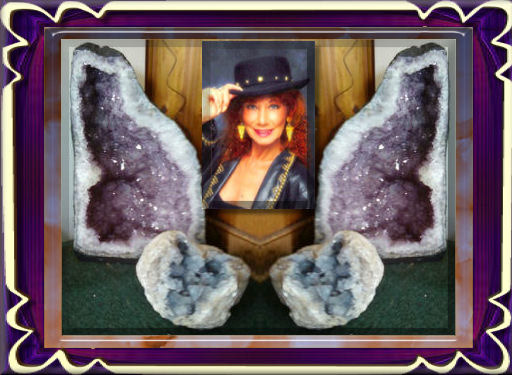Amazonite is a gem variety of microcline feldspar, found in granite pegmatite and metamorphic rocks. Usually associated with quartz and albite, its beautiful pale to deep blue green color is caused by copper traces in the mineral. Usually polished as a cabochon, it displays a schiller of light which is caused by inclusions. Schiller is a lustrous reflection from planes in a mineral grain and is similar to what is more commonly known as iridescence. The schiller is caused by a feature of the stone's crystal structure. Orthoclase feldspar and albite are present in close association, arranged in layers. This causes an interference effect of light.
Amazonite derives its name from an early mistaken belief that it was found only in the land of the Amazon women of South America. The gem actually is found in several areas, the Ural Mountains of Russia once being the primary source. Colorado Amazonite was first exhibited at the 1879 World's Fair, and this put an end to the belief that quality Amazonite was only found in the Ural. Fine crystals from Colorado's Pikes Peak area, often associated with Smoky Quartz, make desirable additions to any mineral collection. Gem quality Amazonite is also found in Amelia County, Virginia, at the Moorefield and the Rutherford mines. There is a tale that Marie Antoinette once owned a set of fine Virginia Amazonite jewelry! Amazonite was used by the ancient Egyptians as Amulets and for inscribed tablets. Objects of Amazonite were found in Tutankhamen's tomb. The gem was used by the Mesopotamians and the Assyrians, who used it in ceremonies for their god Bells. Amazonite artifacts from Pre-Columbian Central and South America have also been found.
Amazonite is found in the United States, Brazil, Zimbabwe, Russia, Australia, Namibia. Amazonite is usually light green to blue-green, mottled and sometimes contains light striations. It varies from bright verdigris green to a bluish green.
Metaphysical:
A semi-opaque stone that was used extensively by the Egyptians it is called the stone of courage and is said to be named after the Amazon women warriors. Some archaeological evidence suggests that the Amazonians were a matriarchal society during the Bronze Age.
A semi-opaque stone that was used extensively by the Egyptians it is called the stone of courage and is said to be named after the Amazon women warriors. Some archaeological evidence suggests that the Amazonians were a matriarchal society during the Bronze Age.
Amazonite pacifies, soothes, harmonizes. Balances energies, especially male/female. Helps one attune to spiritual dimension. Enhances creative expression, aligns astral bodies, and unifies one with life. Improves self worth. Amazonite is considered a soothing stone that offers confidence and works on the throat chakra. It is called the "hope stone" because it inspires confidence and hope.
Soothes emotions and brings a calm tranquility to the heart. Brings beyond duality, to accept what exists in one's life and understand its purpose more fully. It may open the emotional body to higher vibrations that can seem overwhelming until they are fully integrated. Amazonite gently balances emotions, rational thought and intuition so one may see life clearly. It aids the "inner warrior" and helps with setting goals and standing firm about taking responsibility for one's life and attitudes, to achieve one's true heart's desire. It aids truth and clarity in communication and self-expression, and in problem solving. It eases depression and apprehensive feelings. A stone for harmony and compassion in all relationships, including self-love and acceptance of one's own true unique and individual nature.
Chakras: Heart and Throat.
Composition: Amazonite is a member of the orthoclase group, a variety of microlene feldspar.
Class: tektosilicate
Specific gravity: 2.56-2.57
Luster: vitreous
Transparency: opaque to translucent
Fracture: conchoidal
Mohs-Scale Hardness: 5-6
Composition: Amazonite is a member of the orthoclase group, a variety of microlene feldspar.
Class: tektosilicate
Specific gravity: 2.56-2.57
Luster: vitreous
Transparency: opaque to translucent
Fracture: conchoidal
Mohs-Scale Hardness: 5-6
